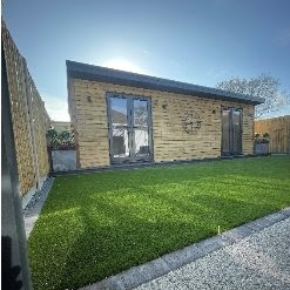
Improving the tenant experience of intelligent buildings
GUEST BLOG: Lewis White, Managing Director for Northern Europe, CommScope.
Lewis looks at how we can make good use of data to improve the efficiencies of truly intelligent buildings and enhance the lives of the people living or working within them.
According to the Royal Institute of British Architects, we spend an average of 20 hours each day inside either commercial or residential properties.
It’s perhaps concerning to learn then, that with around two billion smartphone users across the globe, and with about 80 percent of mobile data sessions originating or terminating inside a building, only two percent of commercial buildings have dedicated systems for guaranteeing indoor mobile coverage.
CommScope recently commissioned a study to explore the insights and attitudes to this indoor wireless connectivity of the professionals who design and manage buildings; the building managers, facilities managers, real estate managers and architects.
System costs and technical complexity aside, the commercial imperative for installing such a system is clear. Tenants now consider cellular connectivity within a building to be a basic utility, along with the supply of gas, water and electricity. Indeed, two-thirds of respondents rated indoor wireless connectivity as “essential” for employees and it was suggested that implementing a dedicated in-building wireless system could increase a property’s value by up to 28 percent.
A key driver behind this demand for connectivity within commercial properties is that offices are no longer just a place to go to work between the hours of nine to five.
They now serve as venues where employees will collaborate, connect and create at any time. So it’s important for businesses to understand that, to attract employees and tenants, they must offer a ‘best in class’ workspace that will have a positive effect on health, wellness and productivity.
By way of illustration, respondents to the survey suggested that indoor wireless coverage would benefit enterprise tenants by increasing workforce productivity (77%), supporting the recruitment of more talented employees (46%) and even attracting more visitors (39%).
Data intelligence
The workplace of the future will undoubtedly have a wealth of choices for connecting various different devices and, given the current demand and commercial imperative, it won’t be long before dedicated indoor wireless systems are the norm in most buildings.
However, while it’s important to meet its employees’ demands for mobile connectivity, a business must also understand the current state of an environment if it hopes to further improve it and, to do so, it must be possible to measure key environmental, special and energy metrics.
With sophisticated sensor technology embedded into the fabric of a building, this data can be instantly collected, processed and acted upon, providing businesses with the capacity to automatically manage space relating to desk sharing or conference rooms in a more user-friendly, optimised manner.
Ambient room or building conditions, such as light levels, temperature and humidity can be managed for more comfortable and productive working environment and, by optimising energy consumption in real time, a building’s carbon footprint can be reduced, resulting in cost savings and improved CSR credentials.
Additionally, this live data will feed into Integrated Workplace Management Systems and other, similar, software platforms to help create a superior, intelligent and employee-friendly workplace.
As we progress, and the already massive network of interconnected devices that compromises the burgeoning Internet of Things continues to grow, so more data will be available on a building. The task then is to make good use of that data, interpreting it correctly, and applying it in ways that improve the efficiencies of a truly intelligent building, and the lives of the people living or working within it.
Latest news

29th April 2025
Senior pledges to ‘bee’ part of the solution with new biodiversity initiative
Senior Architectural Systems has installed its first on-site beehive, marking another step forward in its commitment to sustainability and biodiversity.
Posted in Articles, Building Industry News, Building Products & Structures, Building Services, Curtain Walling, Doors, Glass, Glazing, Innovations & New Products, news, Restoration & Refurbishment, Retrofit & Renovation, Sustainability & Energy Efficiency, Walls, Windows
29th April 2025
West Fraser range delivering key benefits for South-East carpentry company
An experienced carpenter and building site manager who has recently set up his own company is using high performance panel products from the West Fraser range.
Posted in Articles, Building Industry News, Building Products & Structures, Building Systems, Case Studies, Garden, Restoration & Refurbishment, Retrofit & Renovation, Sustainability & Energy Efficiency, Timber Buildings and Timber Products
29th April 2025
CPD Courses Available Online From Ecological Building Systems
Ecological Building Systems, a leading supplier of natural building products for sustainable construction, has revealed its comprehensive CPD programme for the year ahead.
Posted in Articles, Building Industry Events, Building Industry News, Building Products & Structures, Building Services, Continuing Professional Development (CPD's), Information Technology, Innovations & New Products, Insulation, Restoration & Refurbishment, Retrofit & Renovation, Seminars, Sustainability & Energy Efficiency, Training, Walls, Waste Management & Recycling
29th April 2025
WindowBASE launches new prospect databases at FIT Show
Visit WindowBASE at the FIT Show to see first-hand how it helps companies find new customers – the company is launching an easy-to-use, intuitive platform on Stand G16 at the NEC Birmingham from 29th April – 1st May.
Posted in Articles, Building Industry Events, Building Industry News, Building Products & Structures, Building Services, Doors, Exhibitions and Conferences, Glass, Glazing, Information Technology, Innovations & New Products, Posts, Publications, Research & Materials Testing, Restoration & Refurbishment, Retrofit & Renovation, Windows
 Sign up:
Sign up: